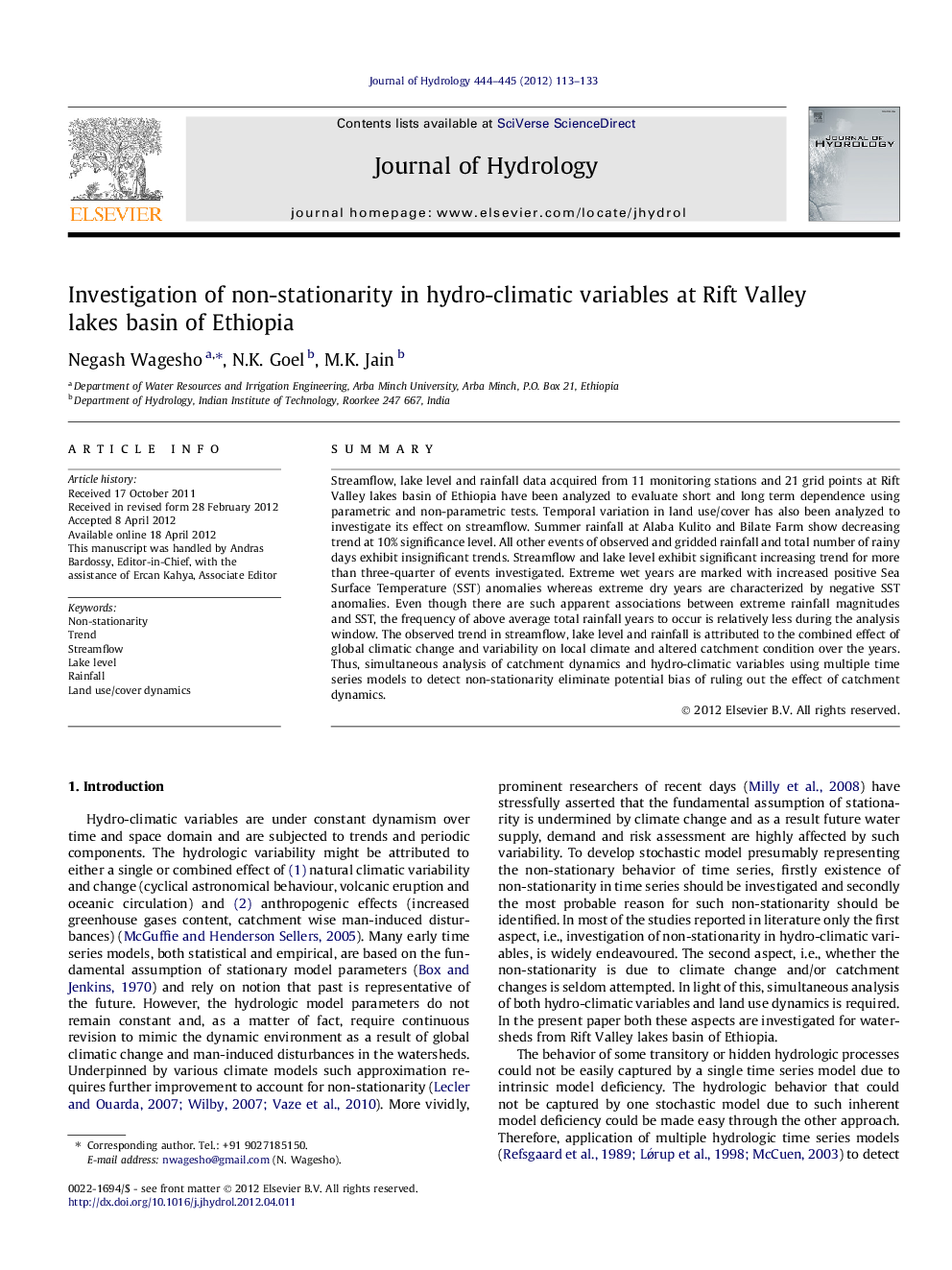| Article ID | Journal | Published Year | Pages | File Type |
|---|---|---|---|---|
| 4576919 | Journal of Hydrology | 2012 | 21 Pages |
SummaryStreamflow, lake level and rainfall data acquired from 11 monitoring stations and 21 grid points at Rift Valley lakes basin of Ethiopia have been analyzed to evaluate short and long term dependence using parametric and non-parametric tests. Temporal variation in land use/cover has also been analyzed to investigate its effect on streamflow. Summer rainfall at Alaba Kulito and Bilate Farm show decreasing trend at 10% significance level. All other events of observed and gridded rainfall and total number of rainy days exhibit insignificant trends. Streamflow and lake level exhibit significant increasing trend for more than three-quarter of events investigated. Extreme wet years are marked with increased positive Sea Surface Temperature (SST) anomalies whereas extreme dry years are characterized by negative SST anomalies. Even though there are such apparent associations between extreme rainfall magnitudes and SST, the frequency of above average total rainfall years to occur is relatively less during the analysis window. The observed trend in streamflow, lake level and rainfall is attributed to the combined effect of global climatic change and variability on local climate and altered catchment condition over the years. Thus, simultaneous analysis of catchment dynamics and hydro-climatic variables using multiple time series models to detect non-stationarity eliminate potential bias of ruling out the effect of catchment dynamics.
► Non-stationarity in hydro-climatic variables is investigated. ► Rainfall in the study area shows decreasing trend. ► Streamflow and lake level are characterized by increasing trends. ► Land use dynamics has altered river flow regime and subsequently affected lake level. ► Average station rainfall is better correlated to June–September SST.
